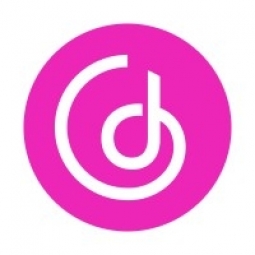Customer Company Size
Large Corporate
Region
- America
Country
- United States
Product
- GoodData
Tech Stack
- Cloud-based advanced analytics
- Data Visualization
Implementation Scale
- Enterprise-wide Deployment
Impact Metrics
- Productivity Improvements
- Digital Expertise
Technology Category
- Analytics & Modeling - Real Time Analytics
Applicable Industries
- Education
Applicable Functions
- Business Operation
Use Cases
- Predictive Quality Analytics
- Real-Time Location System (RTLS)
Services
- Cloud Planning, Design & Implementation Services
- Data Science Services
About The Customer
The GED Testing Service is a joint venture between the American Council on Education (ACE) and Pearson, the world’s largest education and testing company. Originating in 1942 after WWII so GIs could continue their education as adults, the general education development or GED® test has opened doors to better jobs and college programs for more than 18 million graduates. In 2013, nearly 800,000 adults sat for the GED test, which is accepted by virtually all US colleges and employers. In 2011, this public-private partnership set out to adapt the 70-year old GED test to the skills needed in the 21st century. The new assessment recently launched after years of work and tens of millions of dollars spent overhauling the test and building a program from the ground up, specifically for adult learners.
The Challenge
The GED Testing Service, a joint venture between the American Council on Education (ACE) and Pearson, was looking to adapt the 70-year old GED test to the skills needed in the 21st century. They wanted to centralize testing via authorized testing centers to provide significant quality control for scoring, monitor for fraud detection, and distribute practice tests anywhere to any platform. However, all test scores were fed from various states downstream to a legacy data warehouse that the GED Testing Service would use for statistical analysis and to confirm the accuracy of test scores. This resulted in a detailed annual report, but the data was only updated once a year, which was not sufficient for their needs.
The Solution
The GED Testing Service turned to GoodData for improved access to performance data and to increase the frequency at which they could analyze that data. They had two main goals for their internal audience within the GED Testing Service. First, they were looking for a way to avoid the overhead of building a custom data warehouse. Secondly, they wished to equip personnel with self-service analytics while reducing the need for IT staff to “pull reports” for the Operations and Marketing departments. GoodData’s cloud-based advanced analytics solution and its simple, intuitive user interface enabled the GED Testing Service to solve both problems. They were able to bypass internal data center expenses and quickly empower individuals with self-service analytics to substantially reduce time to insight.
Operational Impact
Quantitative Benefit

Case Study missing?
Start adding your own!
Register with your work email and create a new case study profile for your business.
Related Case Studies.

Case Study
Revolutionizing Medical Training in India: GSL Smart Lab and the LAP Mentor
The GSL SMART Lab, a collective effort of the GSL College of Medicine and the GSL College of Nursing and Health Science, was facing a challenge in providing superior training to healthcare professionals. As clinical medicine was becoming more focused on patient safety and quality of care, the need for medical simulation to bridge the educational gap between the classroom and the clinical environment was becoming increasingly apparent. Dr. Sandeep Ganni, the director of the GSL SMART Lab, envisioned a world-class surgical and medical training center where physicians and healthcare professionals could learn skills through simulation training. He was looking for different simulators for different specialties to provide both basic and advanced simulation training. For laparoscopic surgery, he was interested in a high fidelity simulator that could provide basic surgical and suturing skills training for international accreditation as well as specific hands-on training in complex laparoscopic procedures for practicing physicians in India.

Case Study
IoT platform Enables Safety Solutions for U.S. School Districts
Designed to alert drivers when schoolchildren are present, especially in low-visibility conditions, school-zone flasher signals are typically updated manually at each school. The switching is based on the school calendar and manually changed when an unexpected early dismissal occurs, as in the case of a weather-event altering the normal schedule. The process to reprogram the flashers requires a significant effort by school district personnel to implement due to the large number of warning flashers installed across an entire school district.

Case Study
Implementing Robotic Surgery Training Simulator for Enhanced Surgical Proficiency
Fundacio Puigvert, a leading European medical center specializing in Urology, Nephrology, and Andrology, faced a significant challenge in training its surgical residents. The institution recognized the need for a more standardized and comprehensive training curriculum, particularly in the area of robotic surgery. The challenge was underscored by two independent studies showing that less than 5% of residents in Italian and German residency programs could perform major or complex procedures by the end of their residency. The institution sought to establish a virtual reality simulation lab that would include endourological, laparoscopic, and robotic platforms. However, they needed a simulator that could replicate both the hardware and software of the robotic Da Vinci console used in the operating room, without being connected to the actual physical console. They also required a system that could provide both basic and advanced simulation training, and a metrics system to assess the proficiency of the trainees before they performed surgical procedures in the operating theater.

Case Study
Edinburgh Napier University streamlines long-distance learning with Cisco WebEX
• Geographically dispersed campus made in-person meetings costly and inconvenient.• Distance-learning programs in Malaysia, India, and China required dependable, user-friendly online tools to maximize interaction in collaborative workspaces.• Virtual learning environment required a separate sign-in process, resulting in a significant administrative burden for IT staff and limited adoption of collaboration technology.

Case Study
8x increased productivity with VKS
Before VKS, a teacher would spend a lot of time showing a group of 22 students how to build a set of stairs within a semester of 120 hours. Along with not leaving the teacher much time to provide one-on-one support for each student to properly learn carpentry, it also left a considerable amount of room for error. Key information would be misinterpreted or lost as the class was taught in the typical show-and-tell way.

Case Study
Scalable IoT Empowering GreenFlex's Sustainable Growth
GreenFlex, a company that supports sustainable development, decarbonization, and energy efficiency, faced several challenges in its quest to expand its business. The company needed to deploy a robust and sustainable IoT technology to support its growth. It was crucial for them to monitor and control devices at customer sites in a safe and reliable manner. They also needed to integrate devices across a range of communication protocols and gather and act on data to meet efficiency targets. GreenFlex had previously built IoT capabilities into its digital platform, GreenFlexIQ, to monitor and manage customer sites remotely. However, they soon realized that they needed a new platform to support their ambitions. They needed a platform that could scale to connect more devices for production management and make it easier for the operations team to manage devices in the field.







